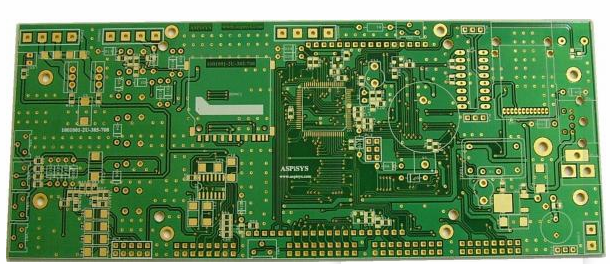This article discusses the main reasons why the high temperature on the PCB causes failures and the circuit board itself is damaged.
Overheating on the printed circuit board (PCB) can lead to poor design, incorrect material selection for components, incorrect component placement and inefficient thermal management.
The resulting high temperature will have a negative impact on functions, components and the circuit board itself. In many applications, the effect of high temperature is negligible, but in high-performance designs, it may be important.
Therefore, proper thermal management is an important aspect of electrical engineering. The integrated approach to thermal management includes attention to everything from the component level to the physical board system and operating environment.
The increase in component density in today's electronic circuits can cause thermal problems. In addition, PCB design flaws and ineffective cooling techniques can lead to unacceptable high temperatures.

Improper placement of components
Certain high-power devices require a location with proper airflow (natural or forced) to transfer heat. Therefore, these should be placed in locations with vents or good airflow.
Without proper airflow and heat dissipation, the PCB will retain most of the heat, which will cause the temperature to gradually rise, resulting in poor circuit performance or damage. Also, keep in mind that if sensitive components are placed near parts that emit a lot of heat, they will be thermally stressed.
What are the main reasons for the high temperature of PCBs
Radiator with cooling fan
High-power components such as power transistors can generate hot spots on the PCB board. However, through proper heat dissipation and natural or forced cooling, the temperature can be kept within a safe range.
Environmental and external thermal factors
It is not considered that when the PCB is used in extreme temperature areas, the conditions in the target environment during the design process may subject the components to thermal stress.
The manufacturer provides specifications suitable for a specific temperature range. For example, the resistance value is usually quoted at a temperature of 20°C. It is important to remember that the parameters of components such as resistors, capacitors, and semiconductors vary with temperature.
Information about calculating the actual resistance of a resistor at a given temperature.
In addition, manufacturers usually provide thermal derating curves that specify safe power or current. Changes in parameters such as ambient temperature or airflow.
What are the main reasons for the high temperature of PCBs
Wrong component and material selection
Failure to follow the recommended guidelines when selecting components can lead to heat dissipation. It is important to study the data sheet and consider all relevant information related to power consumption, thermal resistance, temperature limits and cooling technology.
In addition, make sure to select the power rating suitable for the application. . An easy mistake is to reuse the same resistor (maybe because the corresponding component is already in the CAD library), although some applications may require higher power ratings. Perform a quick power calculation on the resistor and ensure that the rating is significantly higher than the maximum expected power dissipation.
Another important issue is the choice of PCB dielectric materials. The printed circuit board itself must be able to withstand the worst-case thermal conditions.
Poor PCB design and manufacturing
Poor layout and manufacturing processes contribute to PCB heat dissipation issues. Incorrect soldering can hinder heat dissipation, and insufficient trace width or copper area can cause temperature rise problems.
For more information on recommended CPB design practices, check out some of our other resources:
Thermal design with exposed pad package
Thermal design with linear regulator
PCB layout tips and tricks: use a ground plane as much as possible
Practical PCB layout tips every designer needs to know
How to convert the schematic to PCB layout: PCB design of custom inclinometer
in conclusion
To prevent heat dissipation problems, designers must reduce heat dissipation and use additional cleaning techniques when natural cooling is insufficient. The production of thermal optimization design requires attention to component specifications, PCB layout, PCB dielectric materials and environmental conditions.